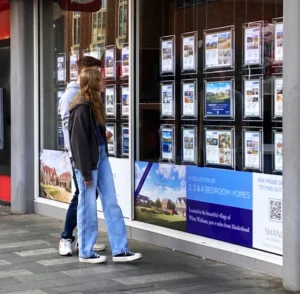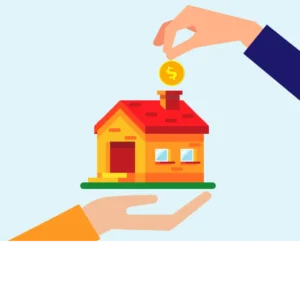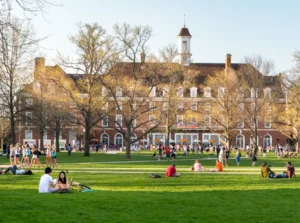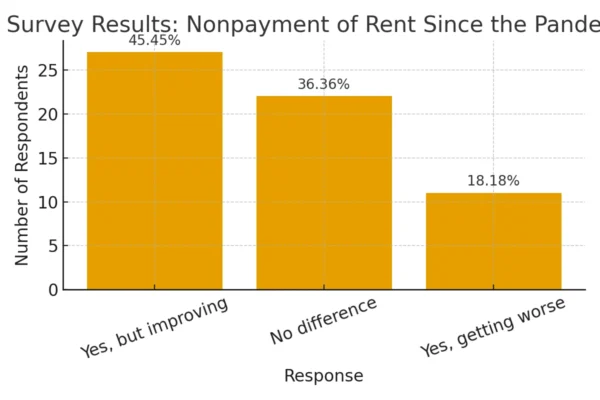A Case Study with a Real Short-Term Rental (STR)
By Jason Kogok, Author of Plug the Holes Fill the Barrel
 As a RE broker who works with a lot of investors, as well as being an investor myself, the idea of investing in Short Term Rentals (STR) has become more prevalent over the years. Maybe even more so over the last 6 months as mortgage interest rates have increased and the viability of cash flow with some traditional RE investments has decreased due to higher carrying costs and mortgage payments.
As a RE broker who works with a lot of investors, as well as being an investor myself, the idea of investing in Short Term Rentals (STR) has become more prevalent over the years. Maybe even more so over the last 6 months as mortgage interest rates have increased and the viability of cash flow with some traditional RE investments has decreased due to higher carrying costs and mortgage payments.
There are thousands of books written on the subject and even more YouTube videos done by so-called experts on the subject. As with much of the information on many real estate investing subjects, the bulk of the knowledge is based on generalities without too much ‘meat on the bone.’
This month we thought we’d run a real case study on a property that we just put on the market as a STR. We’ll examine the reasoning behind choosing this property for a STR versus a mid to long-term rental, as well as real-life expenses and what our potential cash flow will look like.
First, let’s start with the finished product so you can get an idea of the project: bit.ly/AAOAarticle
Here are the stats:
Location – Raleigh, NC – approximately 1.5 mi. from city center downtown
Property – 2 bed, 1 bath, 800 sq.ft
Purchase Price – $425,000
Upfit Renovations – $15,000
Furnishings – $10,000
Mortgage Payment @ 75% LTV – $1,900
Monthly Expenses/Utilities – $500
Total Monthly Carrying Cost – $2,400
This particular area is desirable due to its proximity to downtown and has been highly sought after by relocating people who want to be close to restaurants and things to do, but also been highly stalked by builders and developers who are tearing down these smaller, older homes to build new, massive homes. While prices have of course surged over the past few years, overall, this area has always been relatively desirable to a large number of buyers/renters. Thus, paying $425,000 for only 800 square feet!
What’s first?
The first decision when evaluating the property was a cash-flow analysis. The home would have rented to a long-term tenant for approximately $2,200, so a gross cash-flow of $300 after our mortgage payment of $1,900. Not ideal for the cost of the home and cash invested. Based on the market research I did, I figured we’d get a conservative nightly average rate of $175 and an average location occupancy rate of 60%. We were looking at a gross income of $3,255. This STR would produce a gross cash flow of $855/mo, so a much nicer return. That was calculated by taking the $3,255 and backing out the mortgage + carrying costs of $2,400.
In order to reach that $855/mo, we had to invest $10,000 in furnishings. Also, out of our previously noted $15,000 in upfit renovations, about $3,000 of that was directly related to the STR and were things we wouldn’t have done for a normal long-term tenant. A few examples of those items were electronic door locks, an EV charger and smart light switches. In essence, we spent $13,000 more to turn the property into a STR versus a LTR. One important note about that $13k is that most or all of it will be depreciated/expensed on my taxes, so while the cash invested was real, the value of it is lessened by the tax benefits. I felt comfortable in this situation investing the extra $13,000 to earn an extra $555 per month ($855 STR cash flow – $300 LTR cash flow). The break even on the $13k was under 2 years and the furnishings, etc. will last years beyond that mark, thus making a decent profit before having to upgrade some particular furnishings.
It is important to note that when doing estimates, STR rates will fluctuate at a faster pace than LTR. For instance, in our market, STR are slow in January, but busy in April, so I have to account for smaller rental months, as well as larger ones in my forecasting and budgeting. Whereas with a LTR, my rent will be steady across all 12 months without seasonality. STR’s can also be more immediately and negatively impacted by outside economic conditions, so there is an inherit higher risk with those.
How to maximize my returns and protect my occupancy rate?
While on the surface, the initial numbers were in favor of doing the STR, the key to a successful STR is knowing your guest profile and designing the house to meet their needs, while focusing on the competition. I preach this concept to all of my novice investors – identify the most likely end user and create a property that speaks to them and watch your rents increase and vacancy decrease.
In the example of my property, only 800 square feet with 1 full bath about a mile and a half outside of the city center, the most likely guest renter is a younger couple or a group of two couples coming into town who want to have easy access to all that our downtown has to offer. I’m not expecting a large family to want to rent the place (heck, where would they actually fit anyways). The second group of guests I identified are parents visiting their adult children who live near downtown. Near this part of town, there is a large group of Millennials that live in the area. Most of them are renting apartments or have purchased condos and when their parents come to visit (either for pleasure or because they have a new Grandbaby being born) they don’t want them staying at their place. These parents are often looking for a place close to their children, but don’t need a large home. They also don’t want to stay in a piece of junk just to save $20 a night. They have certain expectations. Now that I’ve identified my top two probable guest renters, what value-add strategies could I implement to hopefully appeal to both groups at the same time?
 Here are the items we chose to add:
Here are the items we chose to add:
- An EV car charger – not only was there a tax credit from the IRS, but I noticed that within a few miles of downtown, there were less than a half of dozen STR’s that had dedicated EV chargers
- We added a few spa-like features to make our 1 bathroom more appealing – we upgraded the shower heads, installed a heated toilet seat (fyi, if you don’t have this, make it your next purchase) and a heated towel bar. It showed the ‘Millennial-Parent’ crowd that the home was upgraded and it was a nice perk and talking point for the ‘Younger-Couple’ guests
- We added really nice beds and linens – now this appeals to everyone and the difference in cost between a mediocre sleeping setup and a luxurious one was not that much, especially if you only have 2 bedrooms
- We added some ‘nice touches’ that cost us less than $5 per guest per stay – they include a few bottles of water, some candy & snack treats, and coffee pods. These items have proven to help get us more 5-star reviews which are so powerful in the long run of these STR’s
- We included large smart TV’s and even a used PlayStation gaming system that we bought on the cheap as a nice accessory item if they were stuck in the house or had bad weather. This was also nice for when the “Millennial-Parent” crowd was going to have one of their local Grandchildren stay with them.
- We allow pets (with approval) – this decision was actually a supply and demand decision. As we did research, we noticed very few STR’s in our area were pet friendly and included a fenced-in yard, which ours has. As a long-time investor, I know I’m more likely to have damage from an actual guest than from a pet. I also know that allowing pets and providing a welcoming environment for them is huge to bookings. We have pet-waste bags for them, some simple dog treats, and a few dog water bowls in case they forget theirs. Those things may seem minor, but each of these items builds on top of each other to increase the overall guest experience.
If you’re visiting Raleigh with a Tesla and a dog, I’m practically the only game in town 🙂
At the end of the day, whether a STR or LTR, the name of the game is mastering the supply and demand formula to where the demand is highest for your property and you’re beating out the supply side by knowing your market and guest profile, along with their preferences, better than your competition.
I do utilize 3 programs to help with the effective management and pricing so I’m always maximizing the profitability. While these 3 programs tally to about $50/mo, I find they earn me more than that in efficiency and time savings. The first program is a Dynamic Pricing program that constantly evaluates the local and hyper-local market and will automatically adjust my daily pricing based on demand, local events and competition. The second program is connected to my dynamic pricing program and is a Property Management System (PMS). The PMS takes the pricing and will upload to all the popular STR booking app websites, coordinates all their calendars, allows me a centralized place to communicate with all guests and streamlines every aspect of the prospect. This program is critical to keeping my response times extremely fast with auto-responders, so I keep highly ranked within the algorithms of the booking apps, but also helps give the guests a great experience and in turn, more 5-star reviews and ultimately, more bookings. More bookings create less vacancy and more desirability, which allows me to slightly increase daily rates. It all adds up! The final program is a virtual guest book, which while on the surface doesn’t necessarily make me money or reduce vacancy, it adds a layer of professionalism to the rental and lets the guests know they are in professional hands. We get continual compliments on the virtual book and it is about $99/year. After all, aren’t we passed the days of vinyl binders sitting on a coffee table showing the local pizza joints?!?!
Long term plan
Finally, with STR’s, you need to be more fluid and flexible with your long-term plans. For me, on this particular project, we are planning to actually add an Additional Dwelling Unit (ADU) in the rear of the property in a few years and add a second STR as a studio apartment. There is even a thought to tear down the home and build a duplex rental on the lot to produce two larger units (this is popular in this particular part of town). Of course, those plans are specific to this property, in this city, and that’s just the point…your plan should be unique to the asset and your location.
Some other generic thoughts on long term planning are to take your extra cash flow from the STR and pay down the mortgage so you can recast or cash-out refinance sooner and leverage the asset into another property and/or be able to turn it into a LTR if you get the payment low enough to make the cash flow more appealing. Possibly you turn it into a mid-term furnished rental property. Maybe you sell the property to another investor and manage the STR for them since you’re well versed in the property.
Having a Plan B (and probably Plan C) with STR’s is very important as we enter a possible recessionary environment and discretionary income will become tighter. The competition will turn into a survival of the fittest. Just look at the moves home builders have done over the past few months with incentives and pricing – a prime example of getting ahead of your competition and the market. Don’t wait for the market to dictate the decision to you, start to get ahead of it!
And when you’re in Raleigh, come visit us at our STR here: bit.ly/AAOAarticle (side note – you don’t have to drive a Tesla or bring a dog to stay with us!)
If you’re looking to learn more about getting started in investing, check out my best-selling book on Amazon: https://www.amazon.com/Plug-Holes-Fill-Barrel-Beginners/dp/0578357178
About the Author

 Jason Kogok started his real estate career in North Carolina in 2002 and became a real estate partner in 2005 with LuxuryMovers. Jason has a General Contractors license and a broad sense of knowledge in investment properties. He enjoys fixing up homes in his spare time, as well as teaching real estate investing at Wake Tech & NC State University’s Continuing Education program. Most recently he authored the book Plug the Holes, Fill the Barrel to teach others the ABCs of building wealth and financial freedom through real estate investing.
Jason Kogok started his real estate career in North Carolina in 2002 and became a real estate partner in 2005 with LuxuryMovers. Jason has a General Contractors license and a broad sense of knowledge in investment properties. He enjoys fixing up homes in his spare time, as well as teaching real estate investing at Wake Tech & NC State University’s Continuing Education program. Most recently he authored the book Plug the Holes, Fill the Barrel to teach others the ABCs of building wealth and financial freedom through real estate investing.













 Accessibility
Accessibility